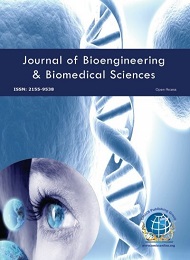Theme: Driving the future with Microfluidics & Bio-MEMS
Microfluidics 2020
MTID=mb279cf170d84f89c7e4fbf024a633ced
Password: Microfluidics@1
International Conference on Microfluidics & Bio-MEMS heartily welcomes the worldwide audience to participate within the conference that goes to be control in October 19-20, 2020 at Amsterdam, Netherlands. The aim of this conference is to produce a world technical forum to showcase recent advances in Microfluidics, Bio-MEMS, and Medical Microsystems. Microfluidic Devices and systems have created an amazing interest in several application fields, as well as life sciences, purpose of care nosology, and environmental applications. The conference aims to assemble leading educational scientists, analysers and analysis students to exchange and share their experiences and research results on all aspects of Microfluidics and its development. There’s an in depth international perspective at this conference with speakers, poster presenters, sponsors, and exhibitors from Europe, US, and Asia/Pacific.
-
Chemical synthesis, Drug Discovery & Development
-
Biomarkers, Circulating Tumor Cells & Single Cell Analysis
-
Biofabrication, Bioprinting & Disease Modelling
-
Diagnostic Devices and Applications
-
Food, Water, Environment Testing using Microfluidics
-
Nanofluidics and Analytical Nanotechnolog
-
Skin
-
Cartilage
-
Bone
-
Blood vessels
-
Organs such as the heart, kidney, placenta and ovaries
-
Drug and nutrient delivery
-
Microfluidic Chips
-
Micro Pumps
-
Micro Needles
-
Application
-
Drug Delivery
-
High-throughput Screening
-
Point-of-Care Diagnostics
-
Lab Analytics
-
Proteomics
-
Genomics
-
Cell-based Assay
-
Capillary Electrophoresis
-
Material
-
Polymer
-
Silicone
-
Glass
-
ETH Zurich
-
Swansea University
-
University of Manchester
-
Imperial College London
-
Cranfield University
-
University of Lincoln
-
Universitat Rivera
-
Virgilio - URV
-
Aberdeen University
-
Grenoble Institute of Technology
-
UCL (University College London)
-
University of Strathclyde
-
University of Cambridge
-
University of East London
-
University of Leeds
-
University of Tokyo
-
National University of Singapore
-
Tsinghua University
-
University of Bolton
-
Manipal International University
-
Amity University
-
Beijing Institute of Technology
-
Ted University
-
Rafik Hariri University
-
Emirates Aviation University
-
South Ural State University
-
Liaoning University of Technology
-
University Kuala Lumpur
-
Massachusetts Institute of Technology
-
University of Minnesota
-
University of Michigan
-
Stanford University
-
Iowa State University
-
University of Maryland
-
University of Wisconsin Madison
-
Penn State University
-
University of California
-
University of Texas
-
University of Wisconsin
-
European Federation of National Engineering Associations
-
European Association For Fluid Dynamics
-
Association Francaise De Mecanique
-
Institution of Engineers of Ireland
-
Institute of Physics And Engineering In Medicine
-
Russian Union of Engineers
-
Ordem Dos Engenheiros
-
Royal Academy of Engineering
-
Association For Project Management
-
Society of Engineers
-
British Nuclear Energy Society
-
Women's Engineering Society
-
Society of Professional Engineers
-
Institution of Mechanical Engineers
-
Technical Chamber of Greece
-
Union of Chambers of Turkish Engineers
-
Institute of Healthcare Engineering
-
Institute of Physics
-
Alpha Pi Mu
-
Alpha Omega Epsilon
-
American Association of Engineering Societies
-
American Indian Science And Engineering Society
-
American Institute of Chemical Engineers
-
American Nuclear Society
-
American Society For Engineering Education
-
American Society of Agricultural And Biological Engineers
-
American Society of Mechanical Engineers
-
American Society of Naval Engineers
-
Biomedical Engineering Society
-
Institute of Biological Engineering
-
The Institute of Industrial And Systems Engineers
-
National Society of Black Engineers
-
Society of Fire Protection Engineers
-
Society of Naval Architects And Marine Engineers
-
Society of Petroleum Engineers
Conference Highlights
- Applications of Microfluidics & Lab-on-a-chip
- Droplet-based, Digital, Centrifugal Microfluidics
- Point-of-care & Biosensors
- Wearables & Mobile Diagnostics
- Micro-chemistry & Micro-systems
- Nano-channel, Micro-channel and Mini-channel
- Bio-fabrication & Bio-manufacturing
- Optofluidics, Plasmonic and Bioimaging devices
- Acoustic Droplet Ejection
- Tissues-on-a-chips and 3D Cell Culture Systems
- Point-of-care Diagnostics & Global Health
- Microfluidics Simulation
To share your views and research, please click here to register for the Conference.
To Collaborate Scientific Professionals around the World
| Conference Date | October 19-20, 2020 | ||
| Sponsors & Exhibitors |
|
||
| Speaker Opportunity Closed | Day 1 | ||
| Poster Opportunity Closed | Click Here to View | ||
Useful Links
Special Issues
All accepted abstracts will be published in respective Our International Journals.
Abstracts will be provided with Digital Object Identifier by


























